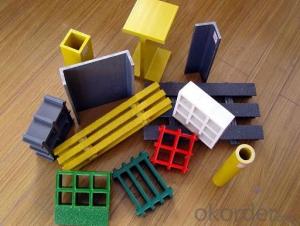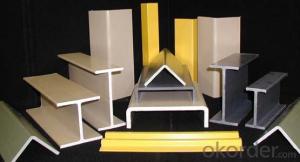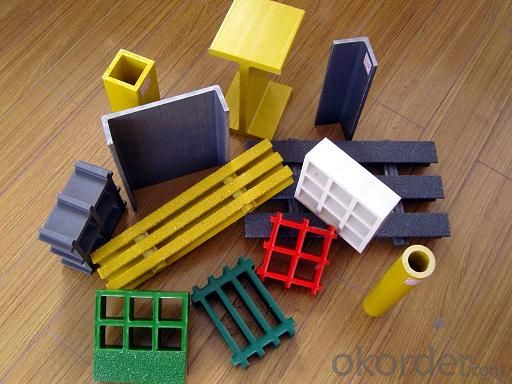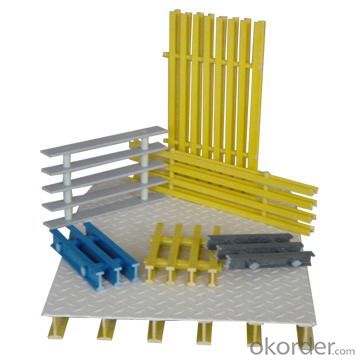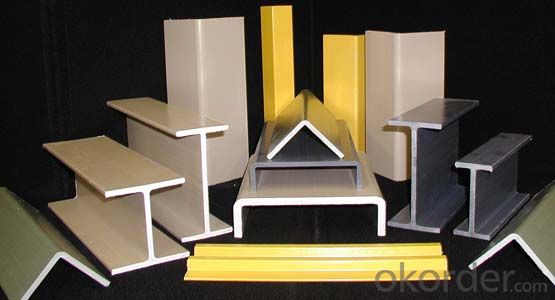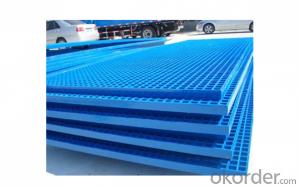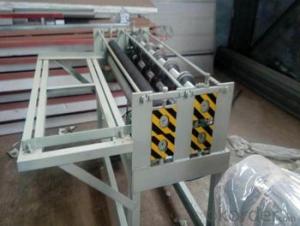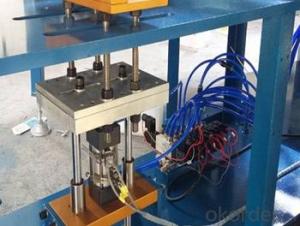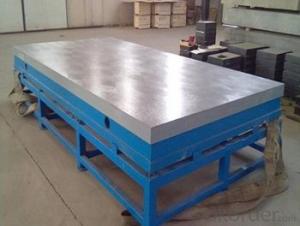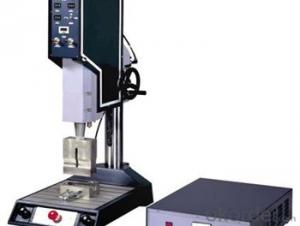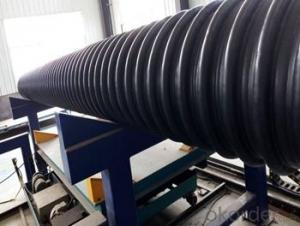FRP Pultrusion Profiles - FRP Pultruded Gratings:Non-Toxic & High Strength
- Loading Port:
- Tianjin
- Payment Terms:
- TT OR LC
- Min Order Qty:
- 4000 m.t.
- Supply Capability:
- 50000 m.t./month
OKorder Service Pledge
OKorder Financial Service
You Might Also Like
Specification
FRP PULTRUDED GRATING AND PULTRUSION PROCESS
PRODUCT DESCRIPTION
Pultruded grating is made by a particular assembly process, which using “I” shape as its main load-bearing and special rod to go through the bearing bar. Pultruded grating include the standard grating and the custom grating, the custom grating can be designed to meet customer’s requirement or special using condition by changing the shape, size and space of the bearing bars, the surface can be covered with lozenge panel, grit panel, or added the anti-slippery sand directly.
FRP pultruded grating has the most characteristics of molded grating, but it has its distinct advantages, it has very high fiberglass content in the loading direction, so it has very high load capability, it has more superiority when used at wide span, so that the basic support will be decreased and the project cost will be reduced accordingly.
SPECIFICATION
The standard space between two crossbars is 6 inch or 12 inch.
Thickness (mm) | Bar width (mm) | Open space (mm) | Open rate (%) | Approx weight (kg/m |
25.4 | 15.2 | 22.8 | 60 | 13.2 |
25.4 | 15.2 | 15.2 | 50 | 15.9 |
25.4 | 15.2 | 10.1 | 40 | 18.5 |
25.4 | 40 | 10.8 | 21 | 14.5 |
38.1 | 15.2 | 22.8 | 60 | 15.8 |
38.1 | 15.2 | 15.2 | 50 | 19.1 |
38.1 | 15.2 | 10.1 | 40 | 22.4 |
50.8 | 25.4 | 25.4 | 50 | 16.6 |
50.8 | 25.4 | 12.7 | 33 | 21.1 |
CHOICE FOR PULTRUDED GRATING
Resin: GP resin, ISO resin, VE resin, Phenol resin
Color choice: Yellow, gray, green, custom color
Surface choice: Groove surface, grit surface, lozenge cover surface
FEATURES
a. Anti-corrosion and anti-rust
b. Light weight and high strength
c. Anti-flammable
d. Anti- fatigue
e. Safe and anti-slippery
f. Anti-ageing
g. Easy of maintenance
h. Excellent electromagnetism property
i. Good economic benefit
APPLICATION
Operation terrace,
stair walkway,
ground floor,
trench cover,
sidewalk,
foot bridge,
equipment safety fence,
scaffold.
COMPANT DESCRIPTION
CNBM,China National Building Materials Group is a state-owned enterprise in charge of administrative affairs in china building materials industry. Established in 1984, CNBM is a large group corporation of building materials with total assets of 25 billion RMB and a total staff of 30,000.CNBM now owns 200 subordinating firms of solely owned and joint-venture companies.
CNBM International Corporation is one subsidiary of CNBM, we focus on offering good-quality products,professional service and complete solution to our customers. Strong delivery capacity, advanced technology& management, strong financing capability and excellent after-sale service are our advantages in sharing international market.
FAQ
1.Q:Are you factory or trading company ?
A:We are Factory produce FRP machines and FRP products.
2.Q:If can customized by customers requirements?
A:yes,we can produce the machine with customized size.
3.Q:How about the payment?
A:We accept any kind of payment.
4.Q:What is the guarantee?
A:Gurantee is one year.
5.Q:If you can training?
A:yes ,we can training in our factory also can send engineers to your factory training.
PICTURES
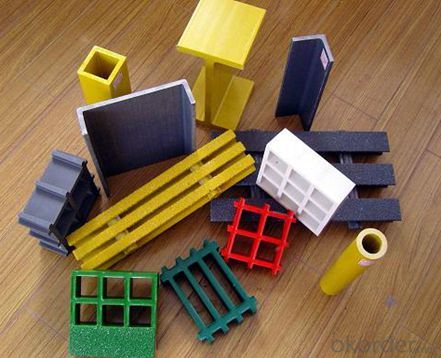
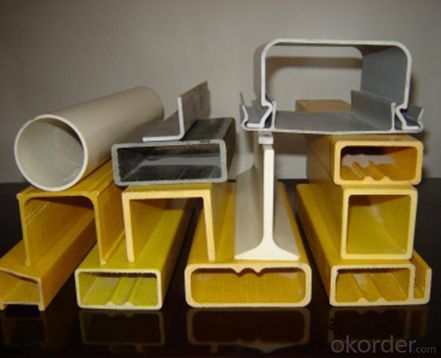
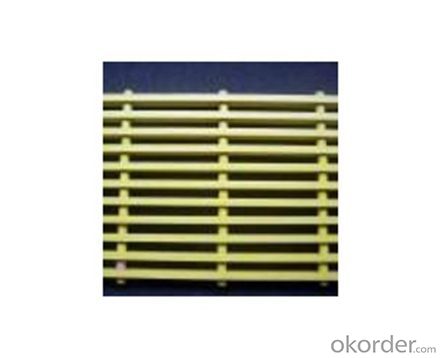
- Q: Can FRP pultrusion profiles be used in the production of electrical cabinets?
- Yes, FRP (Fiber Reinforced Polymer) pultrusion profiles can be used in the production of electrical cabinets. FRP pultrusion profiles provide excellent electrical insulation properties, high strength-to-weight ratio, and resistance to corrosion, making them suitable for use in electrical cabinets where electrical safety and durability are essential.
- Q: Are FRP pultrusion profiles resistant to chemicals used in food packaging?
- FRP pultrusion profiles have proven to be highly resistant to chemicals typically employed in the realm of food packaging. Their remarkable ability to withstand a vast array of chemicals, including acids, bases, solvents, and oils, is well-documented. Consequently, FRP pultrusion profiles are a fitting option for applications that necessitate interaction with food packaging materials. Nevertheless, it is crucial to acknowledge that the chemical resistance of FRP profiles may differ based on the formulation and type of resin utilized. Consequently, it is prudent to seek guidance from the manufacturer or supplier to ensure that the chosen FRP pultrusion profiles are compatible with the specific chemicals employed within the food packaging industry.
- Q: What is the torsional strength of FRP pultrusion profiles?
- Various factors, such as the type and arrangement of fibers, resin matrix, manufacturing process, and overall profile design, determine the torsional strength of FRP pultrusion profiles. Typically, FRP pultrusion profiles are designed to possess a high torsional strength, thanks to the inherent properties of the composite materials utilized. The specific application and desired performance requirements can result in variations in the torsional strength of FRP pultrusion profiles. Manufacturers frequently conduct extensive testing to ascertain the torsional strength of their profiles and provide customers with relevant data. In comparison to conventional materials like steel or aluminum, FRP pultrusion profiles are renowned for their exceptional torsional strength. The combination of high-strength fibers and a robust resin matrix enables FRP profiles to endure substantial torsional forces without experiencing permanent deformation or failure. It is worth noting that the torsional strength of FRP pultrusion profiles can be tailored to meet the precise demands of a project. Manufacturers can optimize the torsional strength by adjusting the fiber type, fiber orientation, resin system, and profile geometry. This ensures that the profiles can withstand the anticipated loads and operational conditions. In conclusion, the torsional strength of FRP pultrusion profiles is typically high due to the unique properties of the composite materials used. Furthermore, it can be further customized to satisfy specific application requirements.
- Q: Are FRP pultrusion profiles impact resistant?
- Yes, FRP (Fiber Reinforced Polymer) pultrusion profiles are generally known for their high impact resistance. The combination of reinforcing fibers, such as glass or carbon, with a polymer matrix results in a material that is inherently strong and durable. The pultrusion process further enhances the impact resistance of these profiles by aligning the fibers in the direction of the load, providing optimal strength against impacts. FRP pultrusion profiles also have a high strength-to-weight ratio, which allows them to withstand heavy impacts without significant damage or deformation. This makes them suitable for applications where impact resistance is crucial, such as in construction, transportation, and infrastructure projects. Moreover, FRP pultrusion profiles offer excellent resistance against corrosion, chemicals, and UV radiation, which further contribute to their durability and long-term performance. These profiles can maintain their impact resistance properties even in harsh environments, making them a preferred choice for various industries. However, it is important to note that the specific impact resistance of FRP pultrusion profiles may vary depending on the specific design, composition, and manufacturing process. Therefore, it is recommended to consult with the manufacturer or supplier to ensure the profiles meet the desired impact resistance requirements for a particular application.
- Q: Can FRP pultrusion profiles be used in the construction of swimming pool enclosures?
- Yes, FRP (Fiber Reinforced Polymer) pultrusion profiles can be used in the construction of swimming pool enclosures. FRP pultrusion profiles are known for their excellent strength-to-weight ratio, corrosion resistance, and durability, making them an ideal choice for outdoor applications like swimming pool enclosures. FRP pultrusion profiles are made by pulling fiberglass rovings through a resin bath and then through a heated die, resulting in a continuous profile of uniform shape and strength. This manufacturing process ensures that the profiles are strong, stiff, and lightweight, making them easy to handle and install. In the construction of swimming pool enclosures, FRP pultrusion profiles can be used for various structural elements such as beams, columns, trusses, and panels. These profiles can provide the necessary strength and support while also offering resistance to corrosion, moisture, and UV radiation, which are common challenges in a swimming pool environment. Additionally, FRP pultrusion profiles can be customized to meet specific design requirements, allowing for flexibility in creating unique and aesthetically pleasing swimming pool enclosures. They can be fabricated in a variety of shapes, sizes, and colors, making it possible to achieve the desired architectural look and feel. Overall, FRP pultrusion profiles offer a reliable and long-lasting solution for constructing swimming pool enclosures, providing the necessary strength, durability, and resistance to environmental factors. Their lightweight nature also makes them easier to handle and install, reducing construction time and costs.
- Q: Can FRP pultrusion profiles be used in electrical insulation applications?
- Yes, FRP pultrusion profiles can be used in electrical insulation applications. FRP (Fiber Reinforced Polymer) materials have excellent electrical insulation properties, making them suitable for a wide range of electrical applications. The pultrusion process ensures that the profiles have uniform insulation properties and high strength, making them ideal for use in electrical insulation applications.
- Q: Can FRP pultrusion profiles be used in the construction of highway guardrails?
- Yes, FRP (Fiber Reinforced Polymer) pultrusion profiles can be used in the construction of highway guardrails. FRP pultrusion profiles offer several advantages that make them suitable for this application. Firstly, FRP pultrusion profiles are lightweight yet strong, making them ideal for highway guardrails. They have a high strength-to-weight ratio, which means they can provide the necessary structural support while being much lighter than traditional materials like steel. This makes transportation, installation, and maintenance easier and more cost-effective. Secondly, FRP pultrusion profiles are corrosion-resistant. Unlike steel, which can rust over time due to exposure to harsh weather conditions, FRP does not corrode. This makes FRP guardrails durable and long-lasting, reducing the need for frequent repairs or replacements. Additionally, FRP pultrusion profiles are non-conductive, meaning they do not conduct electricity. This is an important safety feature for highway guardrails, as it eliminates the risk of electrical shock in case of accidents involving power lines or lightning strikes. Furthermore, FRP pultrusion profiles can be manufactured in various shapes and sizes to meet the specific requirements of highway guardrails. They can be designed to have the necessary stiffness and impact resistance to withstand the forces exerted by vehicles during accidents or collisions. In summary, FRP pultrusion profiles are a suitable material for the construction of highway guardrails due to their lightweight, corrosion-resistant, non-conductive, and customizable properties. They offer a cost-effective and durable solution that can contribute to improving safety on highways.
- Q: Can FRP pultrusion profiles be used in the construction industry?
- Yes, FRP (Fiber Reinforced Polymer) pultrusion profiles can be used in the construction industry. FRP pultruded profiles offer several advantages that make them suitable for various construction applications. Firstly, FRP pultrusion profiles are lightweight yet exceptionally strong. This makes them an excellent choice for construction projects as they provide high strength-to-weight ratio, reducing the overall weight of the structure while maintaining structural integrity. This can be particularly advantageous in applications such as bridges, walkways, and platforms. Secondly, FRP pultrusion profiles are highly corrosion resistant. Unlike traditional construction materials like steel or wood, FRP does not rust, rot, or corrode when exposed to harsh environmental conditions, chemicals, or moisture. This makes FRP profiles ideal for outdoor or marine applications where corrosion is a concern, such as seawalls, docks, or offshore structures. Additionally, FRP pultrusion profiles have excellent electrical and thermal insulation properties. This makes them suitable for applications where electrical conductivity needs to be minimized, such as electrical enclosures or cable trays. FRP profiles also have low thermal conductivity, which can help improve energy efficiency in buildings by reducing heat transfer. Furthermore, FRP pultrusion profiles are highly durable and require minimal maintenance. They have a long service life and do not require regular painting, sealing, or treatment like traditional materials. This can result in significant cost savings over the life cycle of a construction project. Lastly, FRP pultrusion profiles can be designed to meet specific strength, stiffness, and dimensional requirements. They can be manufactured in various shapes, sizes, and colors, allowing for flexibility in design and customization. This versatility makes FRP profiles suitable for a wide range of construction applications, including beams, columns, gratings, handrails, and structural components. In summary, FRP pultrusion profiles are a viable option for the construction industry due to their lightweight, high strength, corrosion resistance, electrical and thermal insulation properties, durability, low maintenance requirements, and design flexibility.
- Q: Are FRP pultrusion profiles resistant to corrosion and chemicals?
- Yes, FRP (Fiber Reinforced Polymer) pultrusion profiles are highly resistant to corrosion and chemicals. FRP is composed of a combination of reinforcing fibers, such as fiberglass, and a polymer resin matrix. This unique composition provides excellent resistance to a wide range of corrosive environments and chemicals. FRP pultrusion profiles have inherent corrosion resistance due to the absence of metal components. Unlike metals that can corrode when exposed to moisture, oxygen, or certain chemicals, FRP does not rust or deteriorate. This makes FRP pultrusion profiles an ideal choice for applications in industries such as chemical processing, wastewater treatment, marine, and oil and gas. Furthermore, FRP pultrusion profiles are highly resistant to a variety of chemicals, including acids, alkalis, solvents, and salts. The polymer resin matrix used in FRP provides a protective barrier that prevents chemical penetration and degradation of the structural profile. This resistance to chemicals ensures that FRP pultrusion profiles can withstand harsh environments without suffering from corrosion or material degradation. In summary, FRP pultrusion profiles are indeed resistant to corrosion and chemicals. Their non-metallic composition and protective polymer resin matrix make them highly durable and suitable for a wide range of applications where corrosion and chemical resistance are crucial.
- Q: Can FRP pultrusion profiles be used in the construction of shipping containers?
- Yes, FRP (Fiber Reinforced Polymer) pultrusion profiles can be used in the construction of shipping containers. FRP pultrusion profiles offer several advantages that make them suitable for this application. Firstly, FRP pultrusion profiles are extremely strong and durable. They have a high strength-to-weight ratio, which allows for the construction of lightweight shipping containers that can withstand heavy loads and harsh environmental conditions. This is particularly beneficial in the shipping industry, where containers are subjected to rough handling and extreme weather during transportation. Secondly, FRP pultrusion profiles are resistant to corrosion, which is a major concern in the shipping industry due to the exposure to saltwater and other corrosive substances. Unlike traditional materials like steel, FRP does not rust or corrode, ensuring a longer lifespan for the shipping containers. Additionally, FRP pultrusion profiles have excellent thermal insulation properties. This helps in maintaining a consistent temperature within the shipping containers, which is crucial for transporting temperature-sensitive goods such as food, pharmaceuticals, and chemicals. Moreover, FRP pultrusion profiles can be easily customized and fabricated into various shapes and sizes, allowing for design flexibility in the construction of shipping containers. They can be molded to specific dimensions and incorporate features such as reinforcements, fastening points, and integrated insulation. Furthermore, FRP pultrusion profiles are non-conductive and have low thermal conductivity. This makes them an ideal choice for shipping containers that transport sensitive electronic equipment or hazardous materials, as they reduce the risk of electrical and thermal accidents. In conclusion, FRP pultrusion profiles can indeed be used in the construction of shipping containers. Their strength, durability, corrosion resistance, thermal insulation properties, design flexibility, and non-conductive nature make them a reliable and practical choice for this application.
Send your message to us
FRP Pultrusion Profiles - FRP Pultruded Gratings:Non-Toxic & High Strength
- Loading Port:
- Tianjin
- Payment Terms:
- TT OR LC
- Min Order Qty:
- 4000 m.t.
- Supply Capability:
- 50000 m.t./month
OKorder Service Pledge
OKorder Financial Service
Similar products
Hot products
Hot Searches
Related keywords

